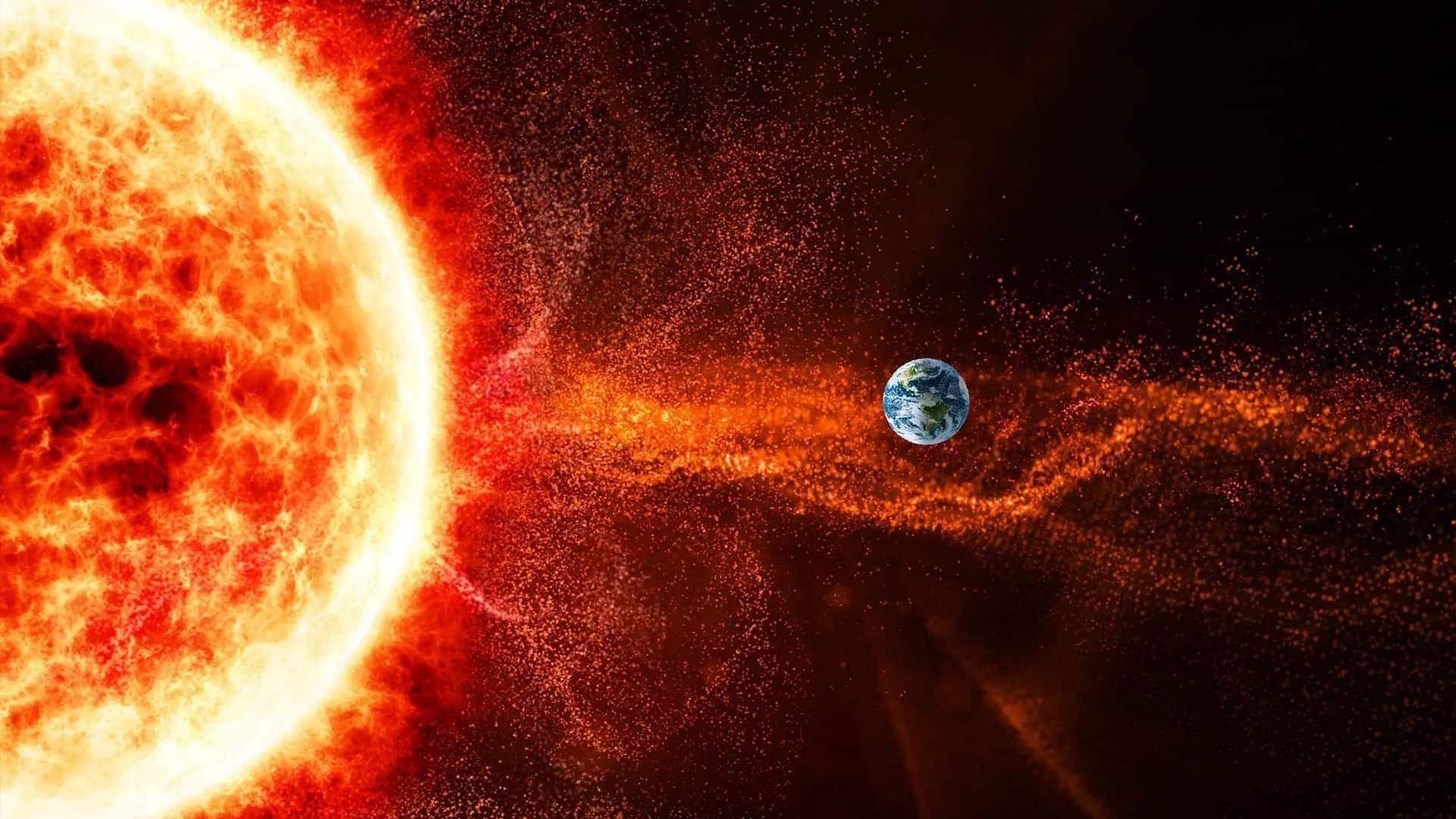
Massive solar storm hitting Earth today: Should you be worried?
What's the story
A powerful coronal mass ejection (CME) is on its way to Earth, with both NASA and National Oceanic and Atmospheric Administration (NOAA) models predicting an impact today. The CME is expected to trigger a severe (G4-class) geomagnetic storm, which could result in spectacular auroras across much of Europe and several US states. This could be one of the biggest space weather events of Solar Cycle 25 if it reaches its predicted intensity.
Eruption details
Sunspot 4100: The source of the solar eruption
The solar eruption comes from sunspot 4100, which erupted dramatically on May 31. Earth-orbiting satellites observed an M8.2-class solar flare that lasted over three hours, an unusually long and powerful event. Though technically just below the X-class threshold, the flare's slow energy release was enough to launch a massive CME from the Sun's atmosphere.
Storm prediction
CME's impact and potential auroras
Shortly after the flare, Solar and Heliospheric Observatory (SOHO) coronagraphs observed a bright halo CME speeding directly toward Earth. Type II radio emissions from shock waves within the eruption indicate a velocity of about 1,938km/s, one of the fastest recorded this cycle. The CME is expected to arrive between midday and early evening today, but exact timing remains uncertain due to changing solar wind conditions.
Storm impact
G4-class storm conditions possible through June 2
Upon impact, the CME is expected to trigger immediate geomagnetic disturbances with G4-class storm conditions possible through June 2. The storm's severity will depend on the orientation and strength of the CME's magnetic field as it interacts with Earth's magnetosphere. If conditions align, auroras could be visible at unusually low latitudes, offering a rare spectacle for skywatchers well beyond polar regions.
Infrastructure alert
Geomagnetic storms can disrupt power grids, satellites
Along with auroras, severe geomagnetic storms can disrupt power grids, satellite operations, and GPS systems. This has prompted infrastructure operators to remain on high alert. Scientists and space weather forecasters stress that every event like this is crucial for gathering data to understand and prepare for the Sun's unpredictable behavior.